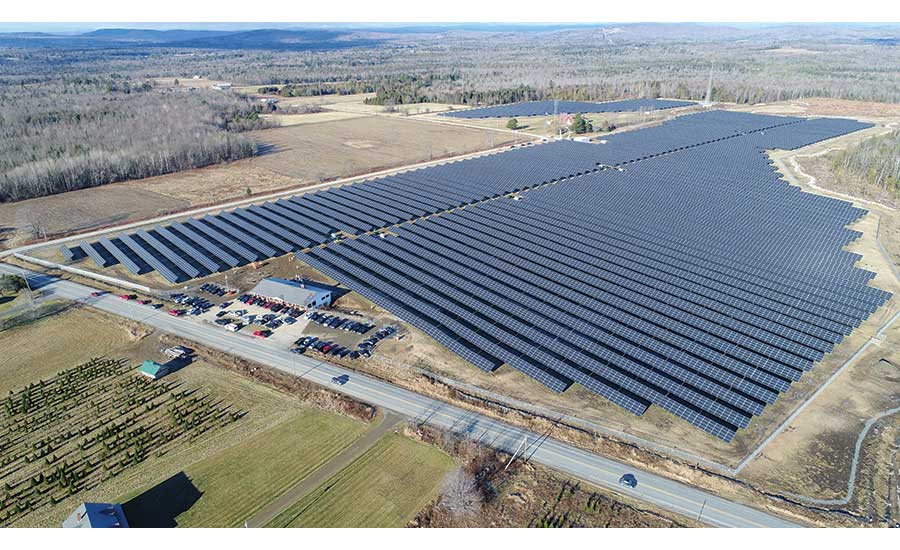Following an aggressive five-month schedule, Cianbro Corp. is putting the finishing touches on a 9.9-MW solar energy facility, which began producing power last month.
“We’re finishing up miscellaneous components, from installing some bracing in the frames to commissioning and finalizing our inverter management,” says Andi Vigue, Cianbro’s chief executive officer. Final grading is scheduled for spring.
The project broke ground in Maine on Aug. 1 and began producing commercial power two days before Christmas.
“It’s good, clean energy,” says Tom Ruksznis, the Cianbro facilities manager who spearheaded the Pittsfield project, which relied on a crew of 100 at peak. “We converted a cornfield, a little strip of woods and a hay field and turned them into an energy-producing facility.”
The project comprises 40,300 solar panels erected on 57 acres of a 115-acre parcel owned by Cianbro. The industrial contractor completed construction and commissioning of the facility within the jurisdiction of regional transmission nonprofit ISO New England.
The panels, manufactured in Malaysia for Longi Solar USA, measure approximately 1 meter (3.28 ft) by 2 m (6.56 ft) each and are set at a tilt of 35° for optimal exposure to the sun, a Cianbro statement says.
“The solar panels absorb the sun’s energy and convert it into direct-current (DC) electricity,” the statement notes. “The energy is inverted to alternating current (AC) and sent to the ISO New England grid, where the electricity is sold under a 20-year contract with Central Maine Power Co,” at a cost of 8.54¢ per kWh generated.
During ideal conditions, the solar farm has the capacity to send up to 9.9 MW of AC electricity to the grid every hour, enough to supply 6,500 homes at peak generation.
“We transmit the power to a Central Power Co. substation near the site, and then it becomes Central Maine Power Co.’s property,” Vigue says.
To secure the system, Cianbro used a fluted post foundation with screw anchors, rather than ballasted block foundation requiring pile driving, Ruksznis says.
The contractor met a tight construction schedule, addressing the disparate interests of the Maine Public Utilities Commission, New England ISO and Central Maine Power, Vigue says.
“It doesn’t take much to lose time with so many parties at the table … but everybody worked well together to achieve the on-line date,” he says.
When Cianbro was pricing panels, “Chinese companies were dumping panels … and some U.S. panel companies went bankrupt,” Vigue recalls. President Trump’s tariff on imported panels had not yet been imposed and Cianbro was able to manage its supply chain successfully.




Post a comment to this article
Report Abusive Comment